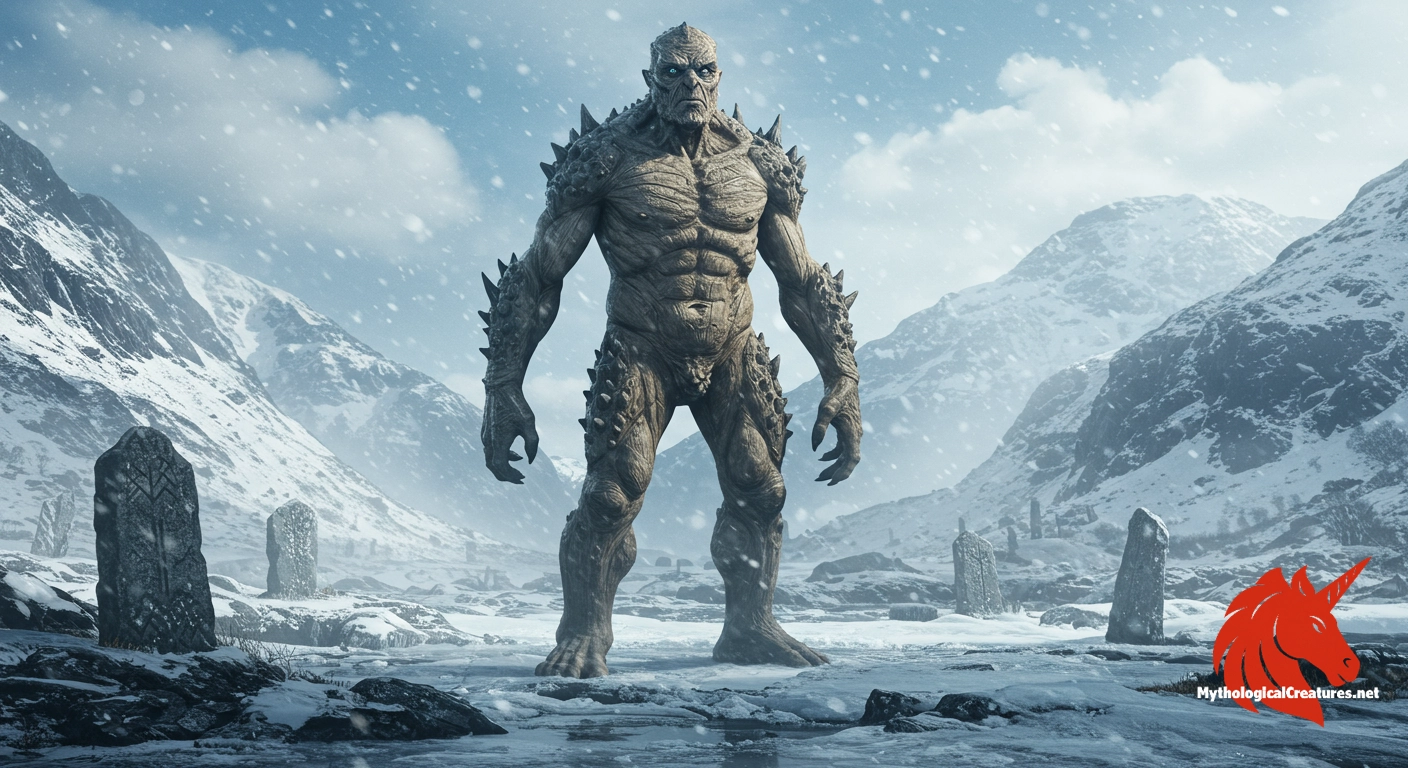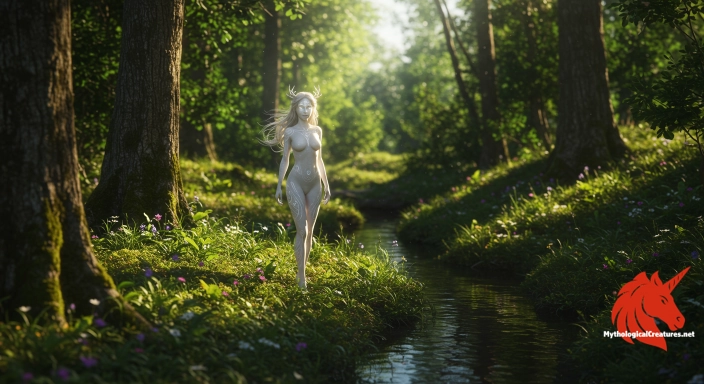Bölþorn: Bölþorn is a jötunn from Norse mythology known as Evil-thorn.

Bölþorn
Bölþorn - Bölþorn is significant for his role in godly lineage, being the father (or grandfather) of Bestla, and possibly the father of Mímir, linking him to the origins of key Norse deities.
Origins & First Encounters
Bölþorn emerges from the shadowed depths of Norse myth as a formidable jötnar whose very name, meaning 'Evil-thorn', hints at an intrinsic wildness and a darker aspect of nature. He is traditionally held to be the father or grandfather of Bestla, thereby linking him indelibly with the divine ancestry of Odin, Vili, and Vé. His origins are deeply enmeshed in a cosmology where primordial chaos breeds both life and strife, setting the stage for the birth of the gods. The first attestations of his character can be traced to the Poetic Edda and later to the Prose Edda, both compiled in the 13th century by scribes who preserved earlier oral traditions. Within these texts, his role is not highly elaborated but remains crucial as an archetype of the ancient, untamed forces that influenced the divine realm. Over generations, his enigmatic presence has provided fertile ground for interpreting the interplay between order and chaos in the Norse worldview. His association with other significant mythological figures underscores the complexity of genealogical ties in a myth where the lines between good and malevolence often blur. As a result, Bölþorn occupies a space where the elemental and the divine intersect in a timeless narrative that continues to intrigue and inspire.
Source Texts & Tale Variants
The primary sources that mention Bölþorn include the Poetic Edda and the Prose Edda—cornerstones of Norse literary heritage that capture the spirit of earlier oral traditions. These medieval texts offer only fragmentary insights into his character, leaving ample room for interpretation and subsequent elaboration by later storytellers. Within these narratives, debates persist about whether his influence extended to the wise being Mímir or remains confined to his murky ties with Bestla. The conflicting accounts found in these manuscripts highlight the fluidity inherent in myth-making, where details shift according to regional transmission and the changing needs of the storyteller. The sparse references do not diminish his enigmatic presence; rather, they invite reinterpretation and analysis, allowing scholars and enthusiasts alike to fill in the gaps. Some traditions even suggest that his role in the ancestry of the gods served as a symbolic reminder of the ever-present potential for chaos in the order of the cosmos. Over the centuries, these texts have been scrutinised, translated, and debated, ensuring that his legacy is continually reassessed. As a result, the corpus of primary sources, although limited in scope, retains a dynamic influence on the understanding of Norse mythological heritage.
Form & Powers
Although the surviving texts provide little direct description of his physical form, the very nature of Bölþorn’s epithet invites an imaginative reconstruction of his appearance. It is often inferred that, like many jötnar, he would have possessed a towering stature and a rugged, formidable presence marked by a raw, untamed vitality. The name 'Evil-thorn' contributes to a visualisation of a being whose visage might be as harsh and pointed as the brambles of a wild thicket, evoking images of spiked features and a stony, perhaps bark-like skin. In some imaginative renditions, his eyes are thought to glint with an eerie, primordial light, reflecting the chaotic energy that courses through his very blood. His appearance could have embodied the paradox of beauty and terror, with an expression that melds natural grandeur with an inherently dangerous aura. Variations in artistic depictions sometimes suggest that his form is not fixed, but shifts with the changing light of mortal perception, much like a shadow on a windswept plain. Such descriptions, though largely speculative, align with the broader Norse tendency to imbue metaphoric power into the physical manifestations of supernatural beings. In essence, Bölþorn’s form is as much a symbol of nature’s indomitable force as it is a subject for creative reimagination in the tapestry of myth.
Regional Faces
The depiction of Bölþorn has varied subtly across different regions within the Norse cultural sphere, each adapting his narrative to local sensibilities and the natural backdrop of their environment. In Icelandic lore, echoes of his myth are sometimes interwoven with broader themes of elemental forces and the stark beauty of the rugged landscape, where even the harshest elements are celebrated as part of nature’s might. In the Scandinavian mainland, storytellers have occasionally amplified his malevolent traits, aligning him with other local legends that emphasise the dangers lurking at the fringes of civilisation. This divergence in portrayal illustrates how the figure of a jötnar could be flexibly adapted to serve various symbolic purposes, from a cautionary emblem of untamed wilderness to an ancestral force entwined with divine lineage. In certain regional narratives, his role is conflated with other giants or nature spirits, blurring the lines between distinct mythological entities. Such variations reflect the dynamic process of oral transmission, where each retelling introduces nuances that resonate with the lived experiences of different communities. The adaptations underscore the capacity of myth to serve as a mirror of both local natural phenomena and the cultural psyche. Thus, Bölþorn not only inhabits the realm of canonical Norse texts but also takes on regional flavours that enhance his enigmatic character.
Cultural Parallels
Bölþorn finds himself in a broader, cross-cultural conversation with other mythological beings who straddle the boundaries between chaos and order. Much like the Titans of Greek lore, his character embodies the forceful, untamed energies that preceded the ascendancy of more structured divine orders. His ambiguous relationships within the divine genealogies of Norse myth echo similar narratives found in other myth systems, where monstrous ancestors often serve as the raw material for the genesis of gods and heroes. In Celtic mythology, for instance, figures with an earthy, primal quality capture the duality of nature’s generative and destructive powers, paralleling the themes found in his story. The similarities extend to the way his ambiguous, mutable identity invites ongoing reinterpretation, much as other ancient beings have been re-envisioned in art and literature over the centuries. His comparison with similar entities underscores a shared human fascination with forces that lie beyond the neat confines of civilisation and morality. In bridging mythological traditions, he serves as a reminder of the universal archetypes that speak to our collective understanding of heritage and chaos. This comparative lens not only enriches our understanding of his role within Norse myth but also highlights the interconnected nature of global myth-making.
Legacy & Modern Evolution
Throughout the ages, the legacy of Bölþorn has been reshaped by both scholarly inquiry and popular imagination, evolving far beyond the sparse details of medieval manuscripts. His role as an ancestral figure in the Norse pantheon has inspired modern reinterpretations that emphasise his connection to the elemental forces of nature and the ambiguous boundaries between good and evil. Contemporary depictions in literature, art, and role-playing games often draw on his archetypal resonance with untamed wilderness and primordial power. In these modern renditions, he is sometimes cast as a symbol of nature's indomitable spirit, reflecting a broader cultural fascination with the enigmatic forces that underpin existence. His ambiguous lineage and physical elusiveness continue to incite debates among academics and enthusiasts alike, ensuring that his myth remains a living, evolving conversation. Modern artistic portrayals frequently highlight the dual nature of his character, blending fearsome beauty with a sense of ancient wisdom. As societies seek to reconnect with the myths of the past, Bölþorn serves as a potent reminder of the timeless allure of enigmatic ancestral figures. His enduring legacy lies in the capacity of myth to adapt to modern sensibilities while preserving the mystique of the ancient world.
Interesting Fact
Bölþorn's ambiguous familial ties, particularly the debate over whether he is the father or grandfather of Bestla, underscore the intricate and often perplexing nature of Norse mythological genealogies.
Quick Creature Info
Origin:
Features:
Associations:
Our Mythic Legendary Rating:

Also Sometimes Known As:
Habitat:
Supernatural Powers:
Physical Attributes:
Abilities:
Behavior:
Lore:
Related Creatures, Tales or Lore
- YYmir
- TThiazi
- SSuttung
References
Discover Another Mythical Legend You May Not Have Heard Of?
Uncover the mysteries of ancient folklore and expand your knowledge of legendary beings from cultures around the world.
Dare to Meet the Povitrulya....
Curated by the Mythological Creatures Team (rev. May 2025)
